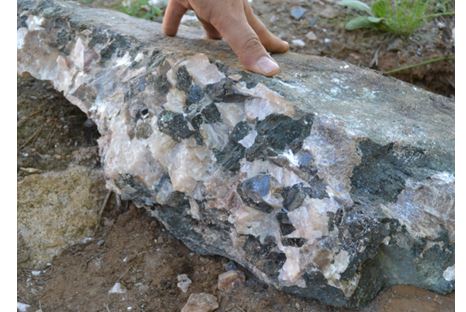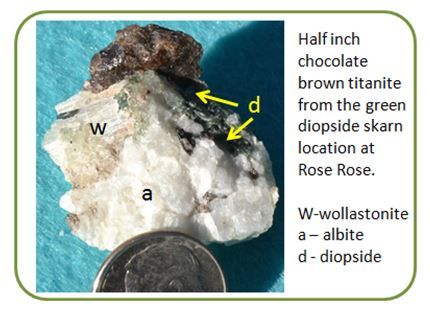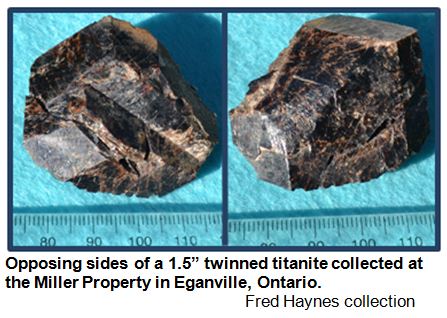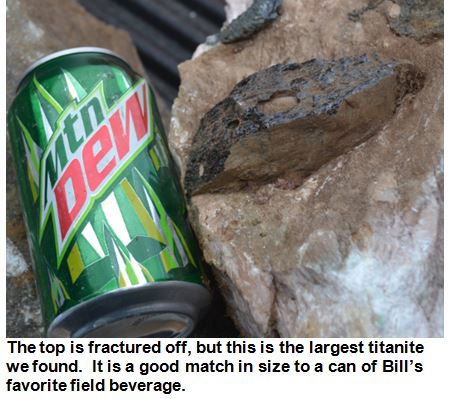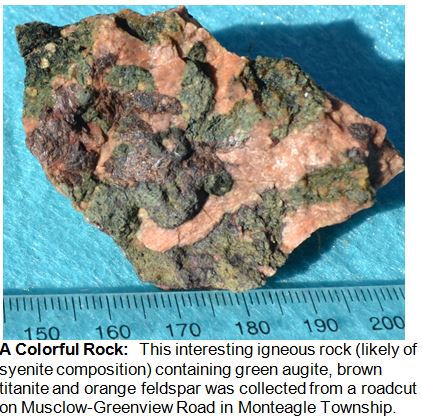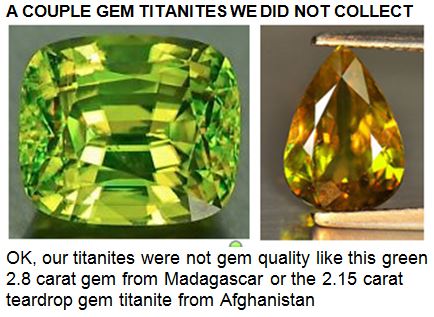Article I wrote for Oct., 2014 WCGMC News
Who knows the most significant event of 1982? Could it be:
- The Epcot Center opens in Orlando, Florida
- Britian overcomes Argentina in the Falklands.
- Chariots of Fire wins Oscar for Best Picture.
- MRI (Magnetic Resonance Imagery) makes its medical debut.
Wrong, wrong, wrong and wrong. The most significant event in 1982 was when the International Commission on Mineral and Mineral Names (CNMMN) adopted the name titanite and discredited the mineral name sphene. Unlike those other events, the impact was immediate and worldwide. OK, maybe a few of you missed the event, but now you know.
WCGMC flirted with titanite collecting all summer. Perhaps not as infamous as the cry “It must be an amphibole”, but “ooh, it’s another titanite” was commonly heard in the field this summer.
Our first encounter was at Rose Road in St. Lawrence County on our Memorial Day trip (see June/July newsletter). Titanite can be found as chocolate brown crystals up to about an inch, but often smaller, at both major collection sites at that Pitcairn, NY location. It may not be as colorful as the green or lavender diposide there, or as fluorescent as the scapolite and albite, or as common as the blue calcite boulders, but it is certainly a prize when occurring as a terminated crystal. Often the titanite occurs in albite, but sometimes the encasing mineral is calcite and the presentation can be improved with a little muriatic acid.
Titanite is a calcium titanium silicate (CaTiSiO5) and occurs as a common accessory mineral in felsic igneous rocks. But more importantly for us Grenville hunters it also occurs in metamorphic rocks. Specifically, in calcite veins and in skarns, where the parent rocks were carbonates and invading fluids contained sufficient silica and titanium. The Rose Road locale is a skarn, but we have actually collected in multiple environments this summer.
The best titanites of the summer were collected at the Miller property in Eganville, Ontario. Some were found as floaters, presumably released from their original home in calcite veins by the near surface action of organic acid (Joyce, 2006). Most showed clear evidence of the penetration twinning common in the species. Digging in the dirt surrounding tree roots around calcite veins can be productive in locating floaters. But our best find came on our return trip to the site in September (see page 1 for more on this trip). While pecking away at a fairly thick calcite vein adjacent to a mafic gneiss host rock, a significant number of 1-2” titanites were exposed. The crystals seemed to be focused near the vein margin. A combination of sawing and chiseling, combined with a dose of patience and probably a bit of luck permitted recovery of several 1-2” shiny and twinned titanites.
The large slab in the cover photo above is also from Eganville. Can you tell the chocolate brown titanites from the pyroxenes in this calcite vein. Several are greater than 1″ in size and many are nicely terminated: a fine garden rock. More Eganville titanite:
We also found titanite at a roadcut on Musclow-Greenview Road north of Bancroft (Bancroft CC, 2013, p. 46) on our first trip there in July. Stopping for red drusy quartz, a favorite of Sue Hoch, we realized that the host granite was a pretty combination of dark green augite, pink-orange feldspar and chocolate brown titanite. Crystals were rare, but the rock was interesting. Perhaps it will slab nicely, but my preferred pieces are destined to be preserved as interesting igneous rocks.
References:
Bancroft CC, 2013, Bancroft and District Regional Mineral Collecting Guidebook, Bancroftt CC publication, 69 p.
Joyce, D.K., 2006, Calcite Vein-Dikes of the Grenville Geological Province, Ontario, Canada, Rocks and Minerals, v. 81, p. 34-42.
